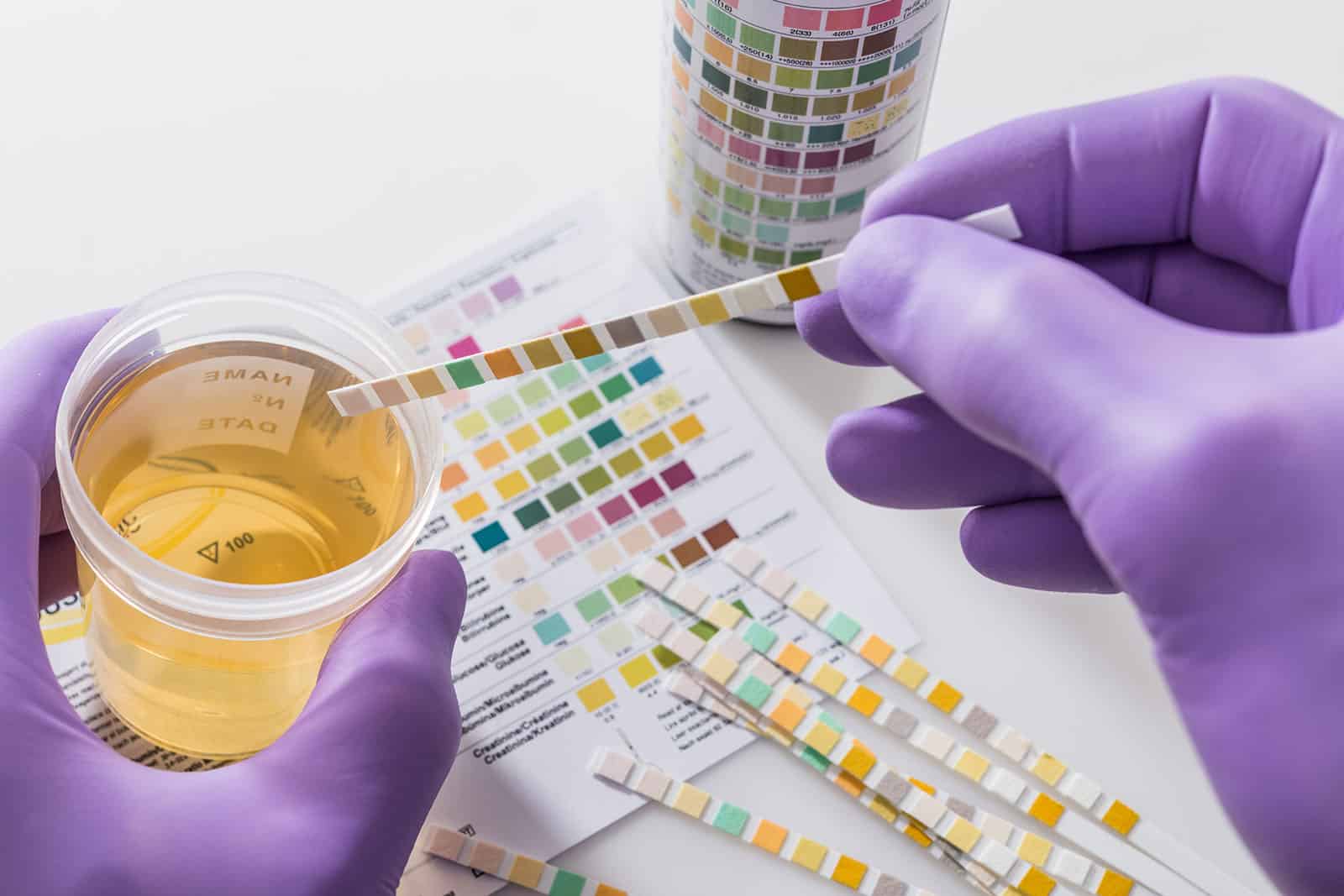
The detection window of lab urine tests varies based on several factors. They include the type of substance consumed, frequency of use, body mass, gender, age, and ethnicity, to mention a few.
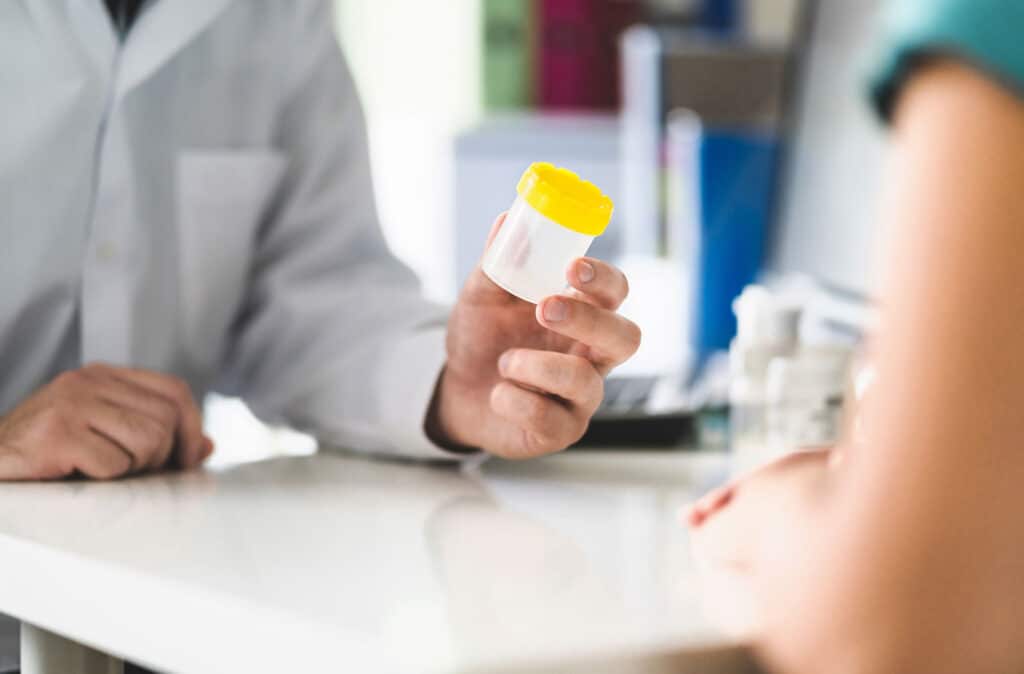
A urine drug test is a biological process that analyzes drug-related molecules in a urine sample. Evidenced-based sources reveal that urine is the most prevalent biological specimen used for drug screening compared to hair, saliva (oral fluid), and blood tests. This is because a wide range of drugs are detectable in urine. One can detect prescription drugs, illegal substances, and legal drugs. The most common drug molecules analyzed in urine samples include opioids, cocaine, PCP, marijuana, and amphetamines. Alcohol is also detectable during a urine drug test, although a breath test is usually more recommendable. Aside from detecting a wide range of molecules, specimen collection is quick and painless, as it is non-invasive. Also, due to its affordability, most folks prefer drug testing to other methods. This article will explore and review significant details concerning urine drug testing, including the detection windows of different substances.
Urinalysis Vs. Urine Drug Use Screen
Urinalysis is a general lab urine test. This type of routine test monitors overall health diagnoses a medical condition, or monitors an existing medical condition. For instance, kidney and liver complications are some of the conditions diagnosed through urinalysis. On the other hand, a urine drug test incorporates advanced methods to detect a wide variety of metabolites. Many of the molecules are undetectable during the standard urinalysis test. A urine drug test is painless. All one has to do is collect urine in a sample container and hand it over to the healthcare professionals. While urine drug test results come out fast, the amount of time it takes varies depending on the reason for the test. This is due to the different metabolic rates of drugs. A positive result means a particular drug molecule is present, and a negative effect suggests the drug is absent.
Why Does the Detection Time Vary in Urine Drug Tests?
Drug detection time varies depending on several factors. Below are the significant issues that influence the detection time of drugs in a urine sample.
Hydration Level
Drinking large amounts of water or non-toxic fluids interferes with a test significantly. A high amount of non-toxic fluid before sample collection increases dilution within thirty minutes. Usually, the urine remains diluted for a couple of hours, during which it will be challenging to detect particular drug metabolites. Some drug molecules will often be below the cut-off level or even test negative. Depending on the reason for testing, one may have to repeat the test.
Mass and Metabolism
A person’s body mass influences the rate of a drug’s distribution, absorption, and metabolism. Typically, the metabolic rate in a person with a higher body mass will take longer than that of a lower body composition counterpart.
Type of Substance
Drugs last in the body for varying periods, mainly depending on their half-life. For instance, a single dose of marijuana’s detection time lasts two days, while methadone can be detected even five days after use.
Frequency of Consumption
Frequent use of drugs increases the amount of metabolites detectable in a urine sample. Therefore, depending on the type of drug, the detection window for a person who seized altogether and that of a chronic user will vary. Most times, an individual who stopped using a substance several days before testing will test negative.
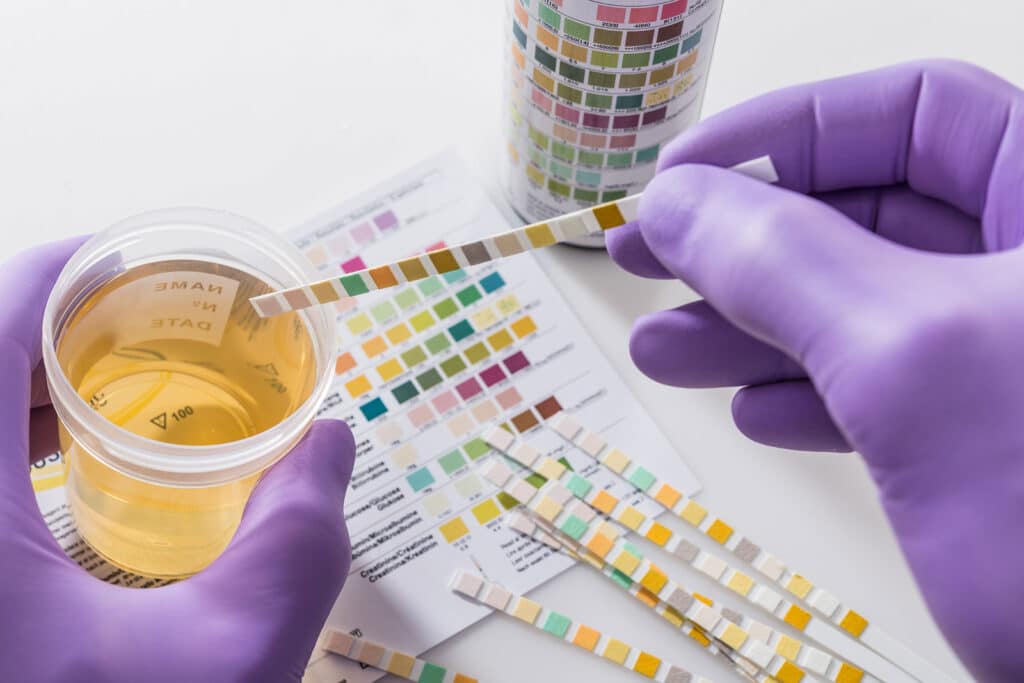
The Detection Window for the Commonly Tested Substances
Amphetamines
Amphetamines are a group of drugs under the class stimulants. The most abused are Methylphenidate, Dextroamphetamine, and a combination of the two. The standard window detection period for this class of drugs is up to 72 hours.
Marijuana
During a marijuana drug test, health experts trace the molecules of delta-9-tetrahydrocannabinol, commonly known as THC. This cannabinoid lasts in the body for up to 30 days.
Methadone
Methadone is a narcotic that has a detection window period of up to 14 days.
PCP
Phencyclidine belongs to the class of drugs hallucinogens. Usually, it is in powder form and mostly dissolved in water or alcohol. The standard window detection period for PCP is four weeks.
Heroine
This is a commonly abused opioid with a detection period of up to three days.
Morphine
Morphine metabolites can be present in urine up to three days after use.
Alcohol
The standard window detection period for alcohol after consumption is seven to twelve hours.
| Drug | Description | Detection Window |
|---|---|---|
| Amphetamines | A group of drugs under the class stimulants. Most abused are Methylphenidate, Dextroamphetamine, and a combination of the two. | Up to 72 hours |
| Marijuana | Health experts trace the molecules of delta-9-tetrahydrocannabinol (THC). | Up to 30 days |
| Methadone | A narcotic with a detection window period of up to 14 days. | Up to 14 days |
| PCP | Belongs to the class of drugs hallucinogens. Usually in powder form, dissolved in water or alcohol. | Four weeks |
| Heroine | A commonly abused opioid. | Up to 3 days |
| Morphine | Morphine metabolites can be present in urine. | Up to 3 days |
| Alcohol | After consumption, detectable for 7 to 12 hours. | 7 to 12 hours |
Why Does Detection Window Vary Among Individuals?
Various factors influence the different detection windows for persons primarily because of every individual’s metabolism rate. The issues responsible for varying detection windows for individuals include body weight, frequency of consumption, age, sex, and ethnicity. For instance, the detection window in older adults is longer than their younger counterparts—as people age, the rate of metabolism reduces. When it comes to ethnicity, drug metabolism is heavily influenced by genotypes.
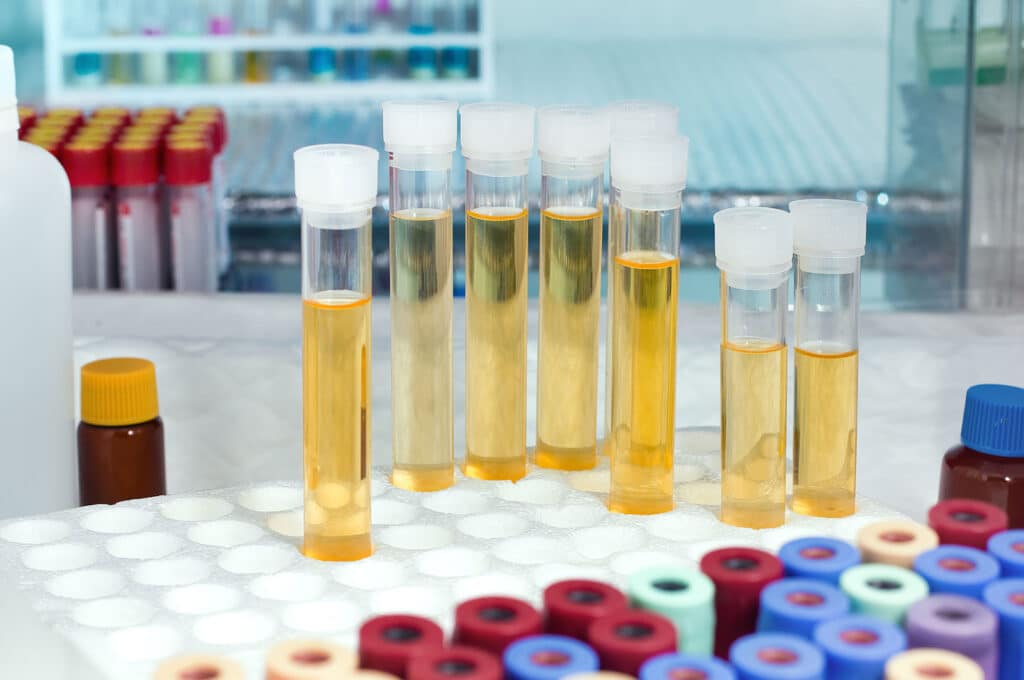
According to the National Institutes of Health, drug interactions in the body may differ due to gene mutations and polymorphism distribution in different ethnicities.
Regarding sex, men generally have a higher metabolic rate than women, primarily due to their lean muscle mass. On the other hand, women naturally have more adipose tissue, which reduces molecule metabolic rate. In conjunction with that, hormonal fluctuation in women interferes with metabolism. Thus, the urine drug detection time in women takes longer than that of their male counterparts.
The Science Behind Drug Detection Window
The primary methods used in urine drug tests are immunoassay and chromatography procedures.
Immunoassay Approach
The immunoassay technique detects the presence of specific drugs and metabolites in urine using antibodies as reagents. Typically, the antibody operates based on specificity. It interacts with an antigen of interest specific to the drug in question. A positive interaction releases signals which indicate the presence of a drug or metabolite.
Chromatography Approach
The chromatography technique applies the molecular mass of substances in urine to detect the presence of a metabolite. A positive or negative result depends on the interaction of urine compounds with the transporting medium, usually a gas or liquid.
Metabolites and Drug Testing
Metabolites are small molecules that result from metabolism. They are significant in drug testing because they are biomarkers of the parent molecules. Regarding drug monitoring, metabolites act as cofactors and signaling molecules, thus confirming or disregarding an individual’s use of the parent drug.
The Downsides of Urine Drug Testing
Specimen Tampering
An individual may interfere with the procedure during or after sample collection. For instance, one can consume vast amounts of water or non-toxic fluids, diluting the urine before sample collection. In turn, the number of metabolites in urine will likely be below the cut-off threshold and, in some cases, absent. Some individuals also tamper with the procedure by diluting the urine sample after collection—this refers to adulteration.
Turnaround Time
One may have to wait 24 to 48 hours for the results.
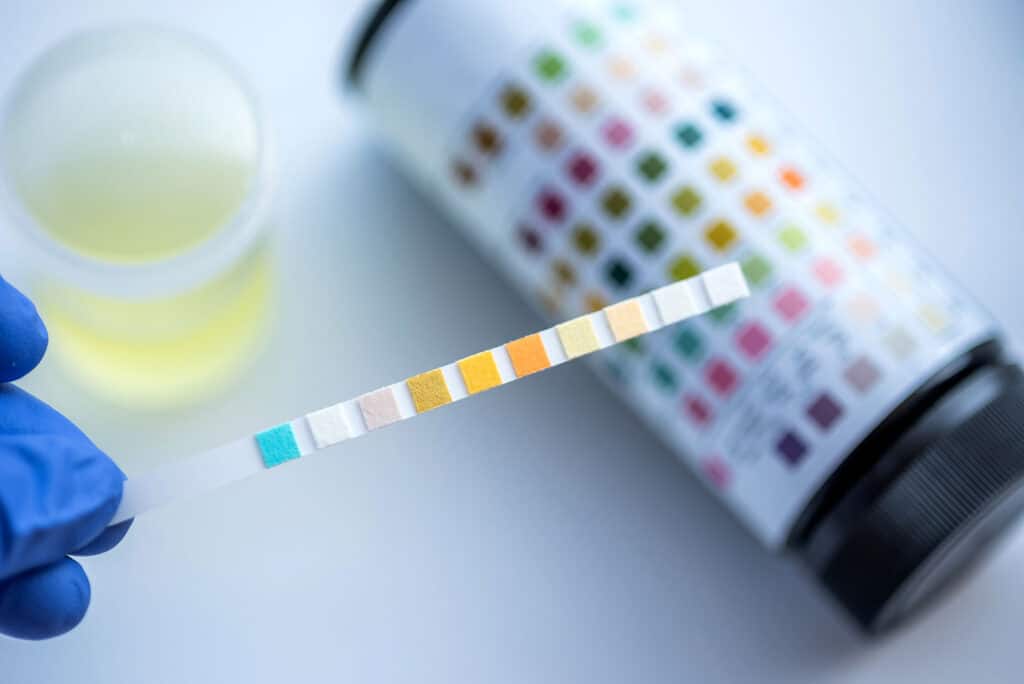
False Positives and Negatives
Urine lab tests are prone to inaccurate results due to external factors such as food, over-the-counter medication, and other substances. Many times, health professionals will suggest additional tests for certainty.
Privacy Concerns
In circumstances where a second party is mandatory to certify the integrity of the collected sample, the individuals in question may feel violated.
Legal and Ethical Considerations of Urine Drug Testing
Urine drug testing is a routine procedure applied in the majority of establishments such as private organizations, government agencies, and other professional administrations for safety purposes. Although approved by OSHA and other health and safety-related organizations, the urine drug testing method still raises several ethical concerns and debates in society.
The Benefits of Urine Drug Testing
1. It helps one in receiving the medical assistance they need in case of drug abuse.
2. Urine drug testing is also valuable in diagnosing other underlying medical conditions.
3. Concerning court cases, UDM is significant in making verdicts.
4. The test also prevents workplace accidents, thus safeguarding all employees’ lives.
5. A urine drug test also improves organizational performance by ensuring employees stay focused and alert.
6. The test also helps detect a mental complication that others may find challenging to notice.
Concerns about UDM
1. A person may feel violated in the case where sample collection is mandatory.
2. Specimen collection in the presence of a second party such as a police officer or medical practitioner may rob one their dignity.
3. The social stigma associated with substance abuse is a cause of shame for many victims, which drives them away from getting help.
4. Many employers would rather fire their employees than give them the support they require to overcome substance abuse.
5. Many individuals consume legal substances such as alcohol during their leisure time, away from the workplace and other professional premises. It makes no sense to subject such individuals to urine drug testing.

How Do You Prepare for a Urine Drug Test?
1. The first step to take before a drug test is to quit using the substance in question if you have been consuming it.
2. Drink an adequate amount of water days before the test. 10-12 ounces daily should be okay. Avoid taking a lot of water on the day of the test, as this will seem suspicious.
3. It is also a brilliant idea to exercise daily. This increases metabolism and helps you sweat out the toxins. However, remember to keep the exercises light.
4. Talk to your trusted healthcare professional for advice about types of food and supplements to avoid. This is to prevent false negatives and positives.
5. On the day of the test, drink water as you would on regular days and relax.
6. Ensure that you bring the required documents.
The detection window of lab urine tests varies based on several factors. They include the type of substance consumed, frequency of use, body mass, gender, age, and ethnicity, to mention a few. The time of substance use before testing also influences the detection window. Although one can take measures to avoid passing a drug test, it is essential to know that some actions can lead to suspicion.
Urine drug screening is crucial to integrity at the workplace, educational institutions, correctional facilities, and judicial verdicts. Following the legal and ethical concerns associated with the practice, knowing your rights and responsibilities would be best. This will help you approach the situation with a better understanding. To better understand all the issues linked to urine drug screening, kindly look into our page for professional information.
References
- Kale, N. (2019). Urine drug tests: Ordering and interpretation. American Family Physician, 99(1), 33-39.
- Kapur, B. M., & Aleksa, K. (2020). What the lab can and cannot do: clinical interpretation of drug testing results. Critical reviews in clinical laboratory sciences, 57(8), 548-585.
- Kolla, B. P., Callizo, G. L., & Schneekloth, T. D. (2019). Utility of urine drug testing in outpatient addiction evaluations. Journal of Addiction Medicine, 13(3), 188-192.
Published on: 2023-12-27
Updated on: 2024-04-07
Discover more from reviewer4you.com
Subscribe to get the latest posts to your email.





